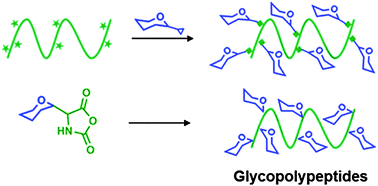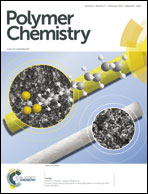Recent advances in glycopolypeptide synthesis
Abstract
Glycosylated peptides and proteins are ubiquitous in nature and display a wide range of biological functions including mediation of recognition events, protection from proteases, and lubrication in eyes and joints. Similarly, synthetic glycopolypeptides are also expected to show great potential as biomedical materials (e.g. scaffolds for tissue repair and drug carriers), as well as serve as valuable tools for probing carbohydrate–protein interactions. Although block copolypeptides and other complex polypeptide architectures have been known for some time, the synthesis of complex and well-defined glycopolypeptide materials, until recently, has been challenging. This article reviews the many advances and accomplishments made in the past few years toward development of strategies and methods for the preparation of synthetic glycopolypeptides via ring opening polymerization.


 Please wait while we load your content...
Please wait while we load your content...